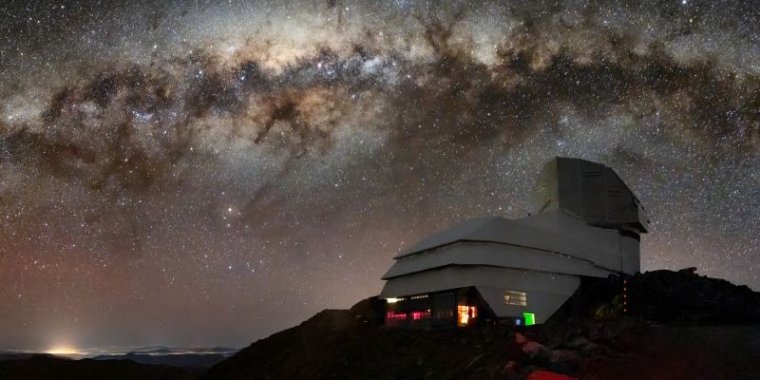| News / Space News |
Rubin Observatory will detect thousands of elusive brown dwarfs, unlocking Milky Way mysteries
Too big to be planets but too small to be stars, distant brown dwarfs are a key ingredient for understanding the history of the Milky Way.

The NSF-DOE Vera C. Rubin Observatory on Cerro Pachón in Chile. The Rubin Observatory will observe the entire visible southern sky every few nights over the course of a decade, capturing about 1000 images of the sky every night and giving us a new view of our evolving universe. Photo: NSF-DOE Rubin Observatory/AURA/B. Quint
These elusive objects have existed since the early universe and have remained relatively unchanged. Anticipated to begin operations in 2025, NSF-DOE Vera C. Rubin Observatory's 10-year Legacy Survey of Space and Time will detect previously hidden brown dwarfs in the halo of the Milky Way, revealing the processes that shaped this galaxy.
NSF-DOE Vera C. Rubin Observatory will reveal a never-before-seen population of brown dwarfs beyond the sun's local neighborhood. Brown dwarfs are excellent for helping scientists disentangle the history of the Milky Way galaxy's formation and evolution, which was strongly influenced by mergers with smaller, nearby galaxies.
By studying the properties of ancient brown dwarfs, scientists can trace them to their original galaxies that merged with the Milky Way and thereby reveal changes in how Milky Way stars formed over the billions of years since the beginning of the universe.
From its vantage point on Cerro Pachón in Chile, Rubin Observatory will take wide, detailed images using the world's largest digital camera, covering the entire visible sky every few nights.
Rubin's near-infrared capability, combined with its wide field of view and ability to see deeply into space, will capture the light from brown dwarfs more than three times further away from the sun compared to current astronomical surveys.
This increase in distance means an even bigger increase in the total volume of space available for scientists to find and study brown dwarfs, offering scientists a much larger sample of these faint objects.
"Rubin will reveal a population of ancient brown dwarfs about 20 times bigger than what we’ve seen up to now," said Aaron Meisner, associate astronomer at NSF NOIRLab and Rubin Observatory's community science team member. (U.S. National Science Foundation)
YOU MAY ALSO LIKE





